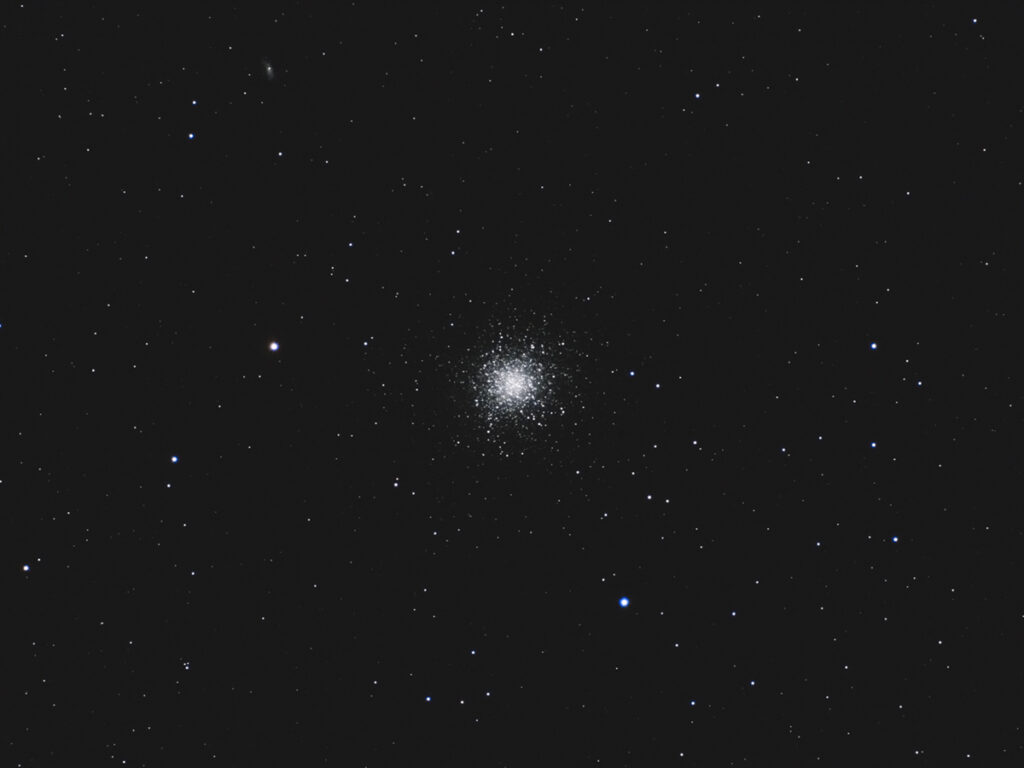
Telescope: Unitron 155 4” f/15 refractor, Atlas EQ-G
Camera: Canon EOS Ra full frame DSLR
Filter: 2” GSO IR Cut Filter
Guide scope: Orion 50mm Guidescope, ASI120MM, PHD, Dithered every 4 subs
Exposure: 26x120sec, ISO 800, saved as RAW
Darks: Internal (Long Exposure Noise Reduction)
Flats: 32×1/80s tee shirt flats taken at dusk
Average Light Pollution: Bortle 8, poor transparency, haze
Lensed Sky Quality Meter: 18.4 mag/arc-sec^2
Stacking: Mean with a 1-sigma clip
White Balance: Nebulosity Automatic
Software: Backyard EOS, Deepsky Stacker, Nebulosity, Photoshop
This is M13, the Great Cluster in Hercules. If you look carefully you can glimpse the tiny galaxy NGC 6207 (Mv 11.6) in the upper left corner as well as a dust lane to the lower left of the cluster. The dust lane is a very unusual feature for globular clusters and it is not clear if this is actually associated with M13 or simply lies in the line of sight with the cluster.
M13 currently rises in the northeast during the early evening.
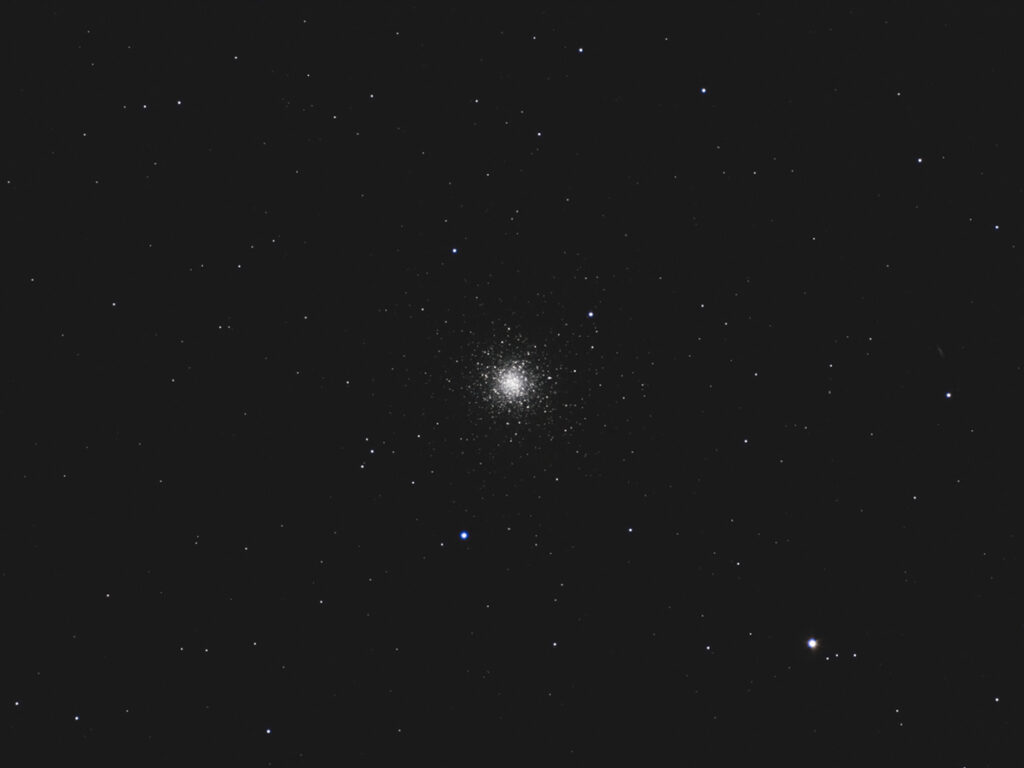
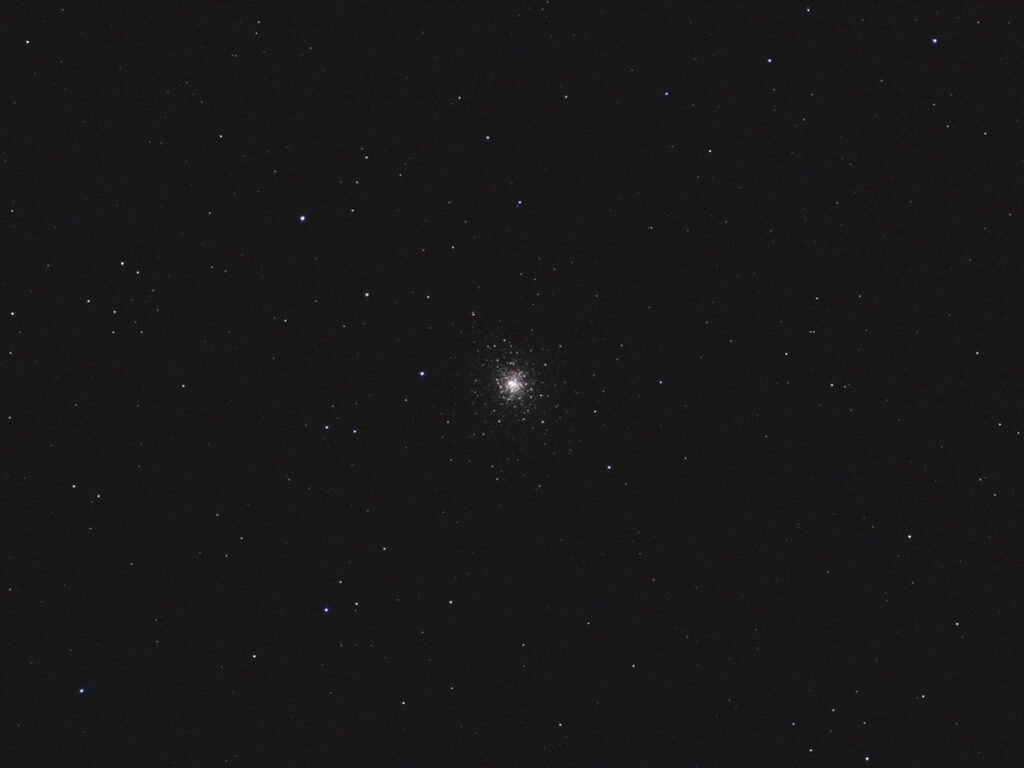

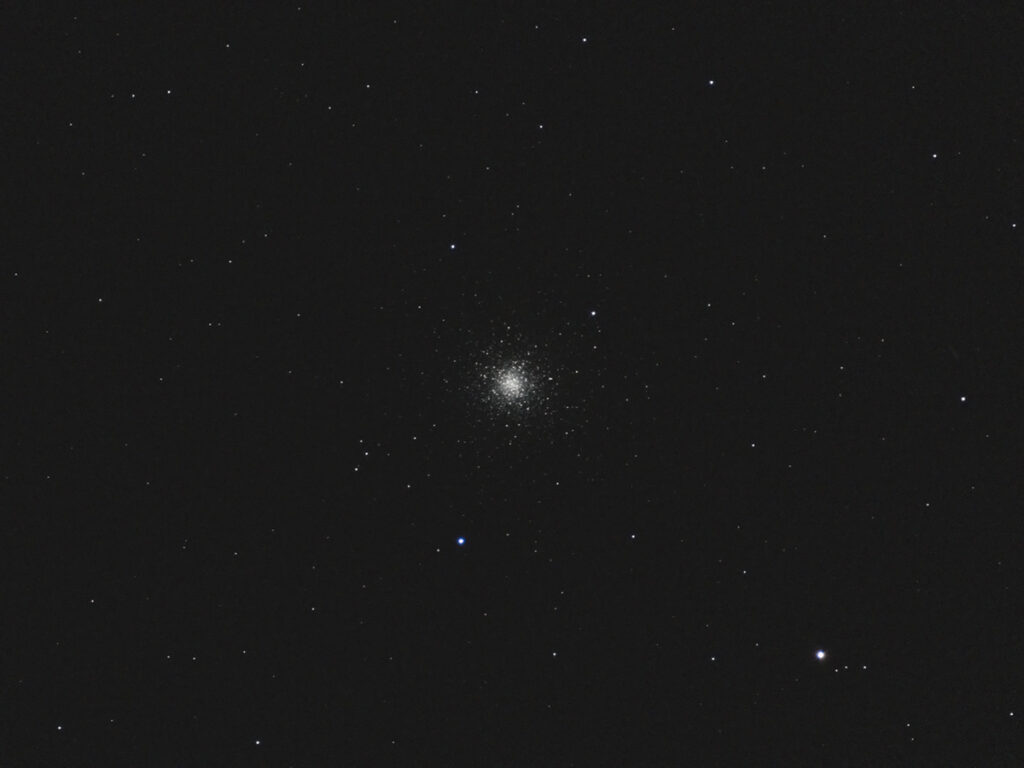

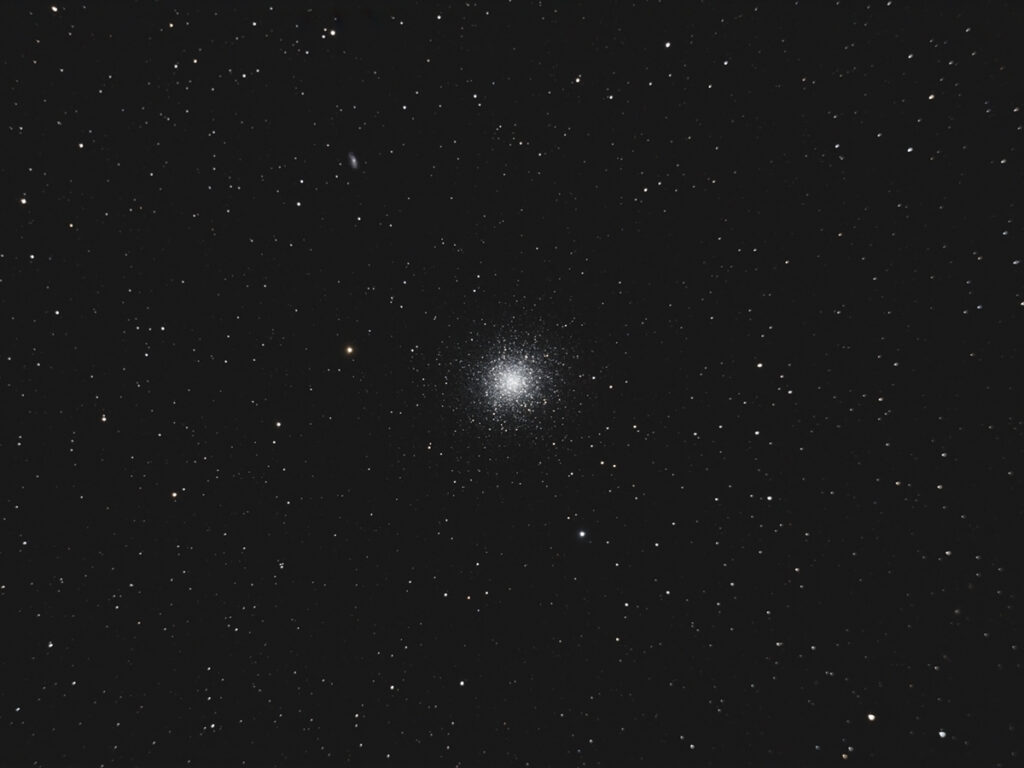
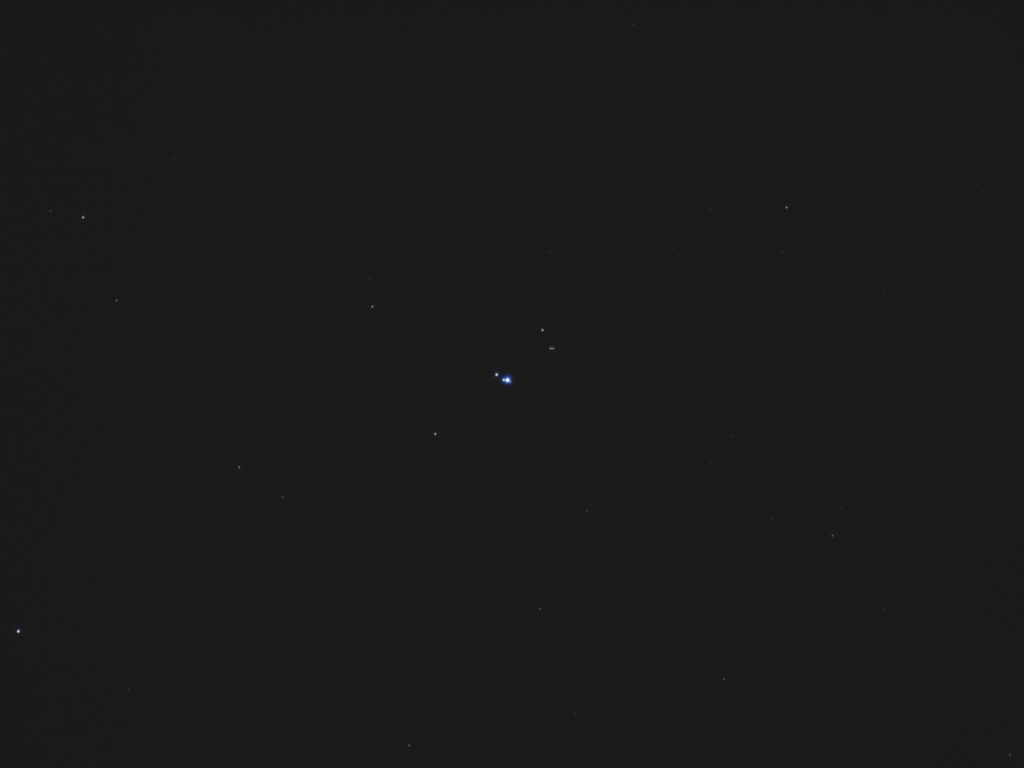
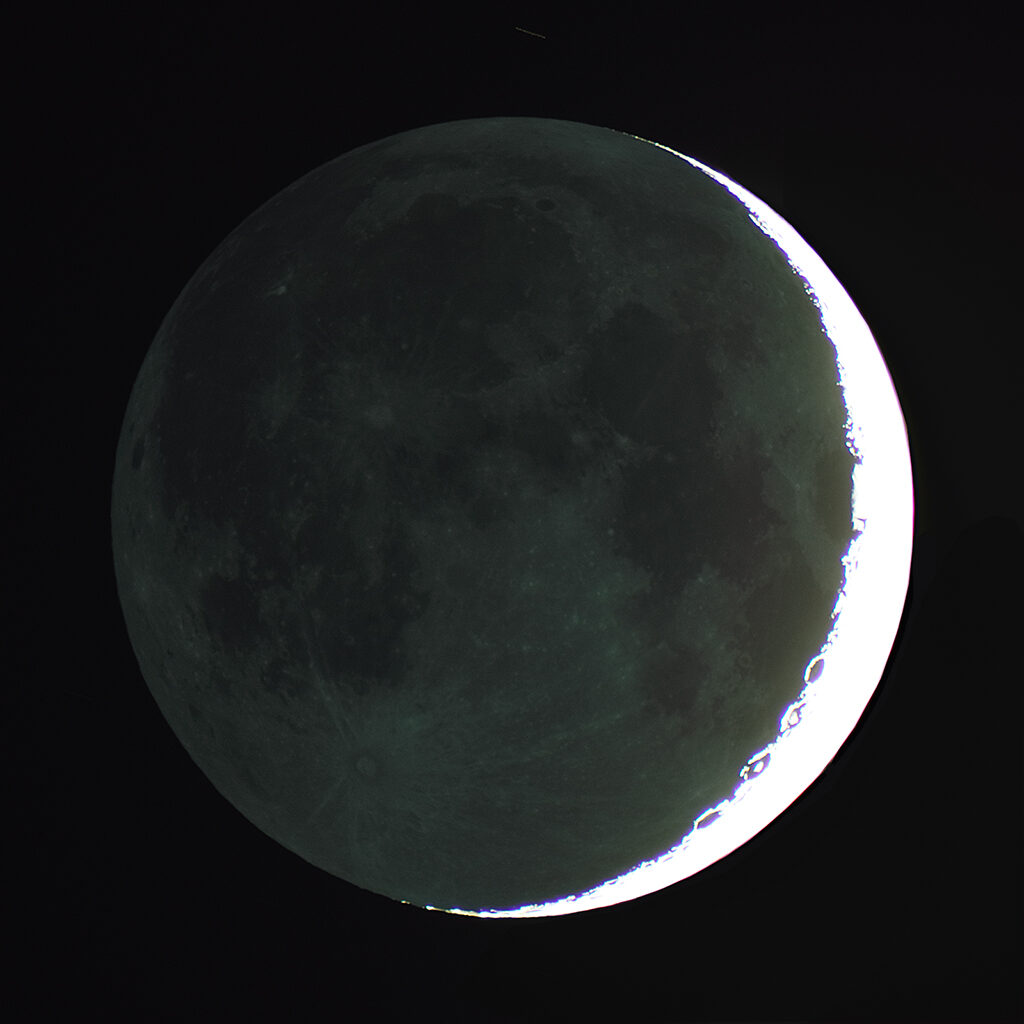
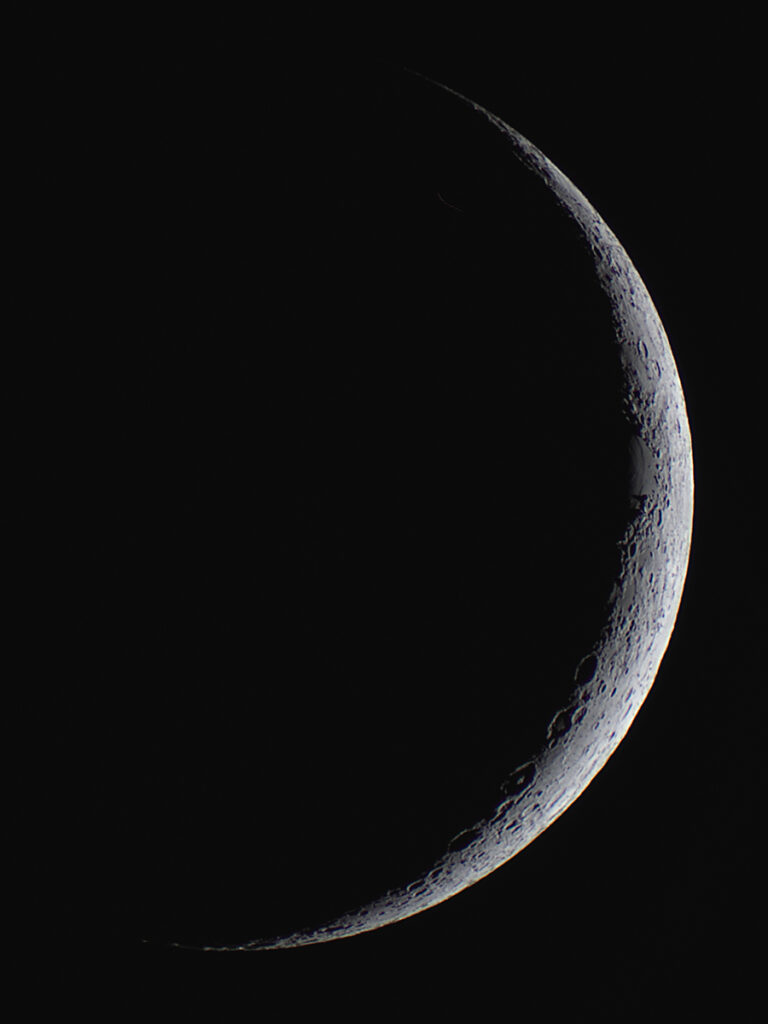
Recent Comments